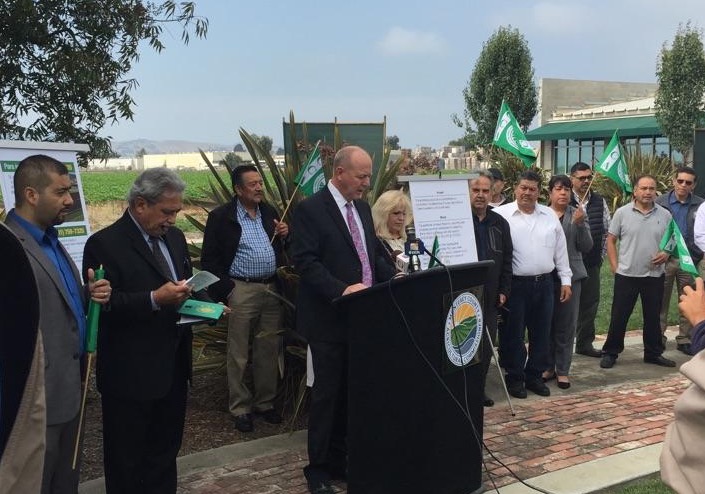Worker Safety
A Brief History on the Pest Control Adviser and Certified Crop Adviser Programs
Longtime Crop Adviser Helped Increase Job Market for CCA Industry
By Brian German, Associate Broadcaster
The Certified Crop Adviser Program (CCA) was introduced in 1992 as a means to address the increased concerns regarding agriculture’s contributions to a variety of environmental issues. By 1994, the CCA program was fully established with the support of the California Department of Food and Agriculture, along with the American Society of Agronomy and the California agricultural industry. The program was designed to raise the awareness and professional standards of individuals who make recommendations on agricultural fertilizers, pesticides and related products.
Allan Romander has a long history with the CCA program, having joined the CCA Board in 2004. “I am currently with the Certified Crop Adviser Program in California, and Arizona I might add. I am a consultant with the organization. I just concluded my term as ICCA Chair and past Chair,” Romander said.
A Pest Control Adviser (PCA) since 1979, Romander joined the California CCA Board in 2004 and was instrumental in helping to develop a marketing program that nearly doubled the number of CCAs in California in a little less than six years.
California is one of just a few states that require people who advise farmers on pest control management to be licensed as a Pest Control Adviser. Amidst rising public concerns regarding pesticide use on California farms, the PCA program was launched in 1973 to ensure that those who make pesticide recommendations are both qualified and knowledgeable. “But that only certified them in the area of pest management,” Romander said. “It never said anything about their competency in the area of crop management or soil or water management.”
 “There has long been a gap between growers and consultants. Consultants historically have just held a Pest Control Adviser’s license,” Romander said. Over time, farmers began to ask their PCAs for guidance on multiple subjects outside of pest control, such as fertilizers and irrigation.
“There has long been a gap between growers and consultants. Consultants historically have just held a Pest Control Adviser’s license,” Romander said. Over time, farmers began to ask their PCAs for guidance on multiple subjects outside of pest control, such as fertilizers and irrigation.
“That’s where the Certified Crop Adviser Program comes in and picks up where the PCA program leaves off. It covers those categories and certifies to a grower that [the adviser] has competency in those other areas,” Romander said.
Currently, there are close to 4,000 EPA-licensed Pest Control Advisers in California. Romander noted, “Eighty-five percent of the Certified Crop Advisers in California are also Pest Control Advisers. So it’s a well-established program and well-respected throughout not only the United States, but North America and the rest of the world.”






























